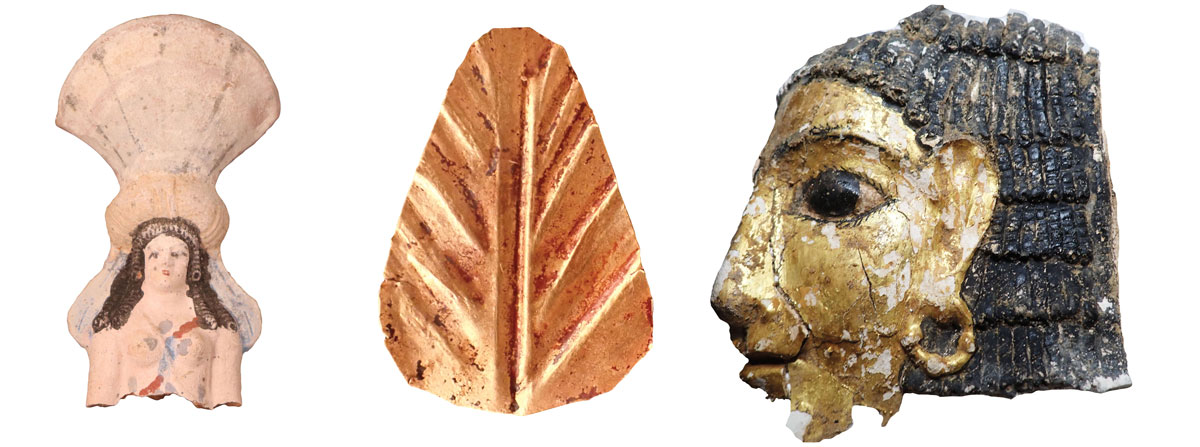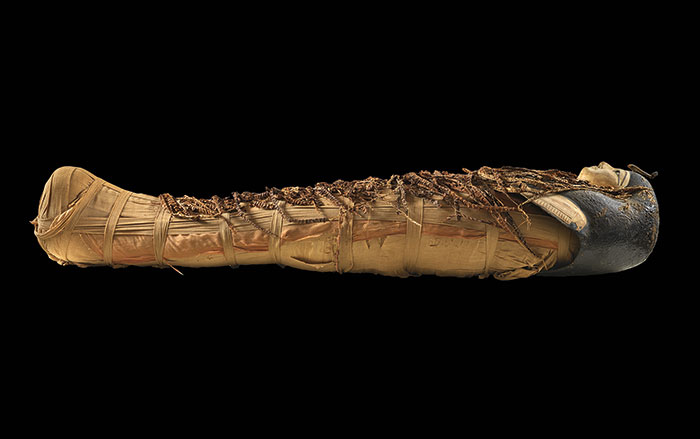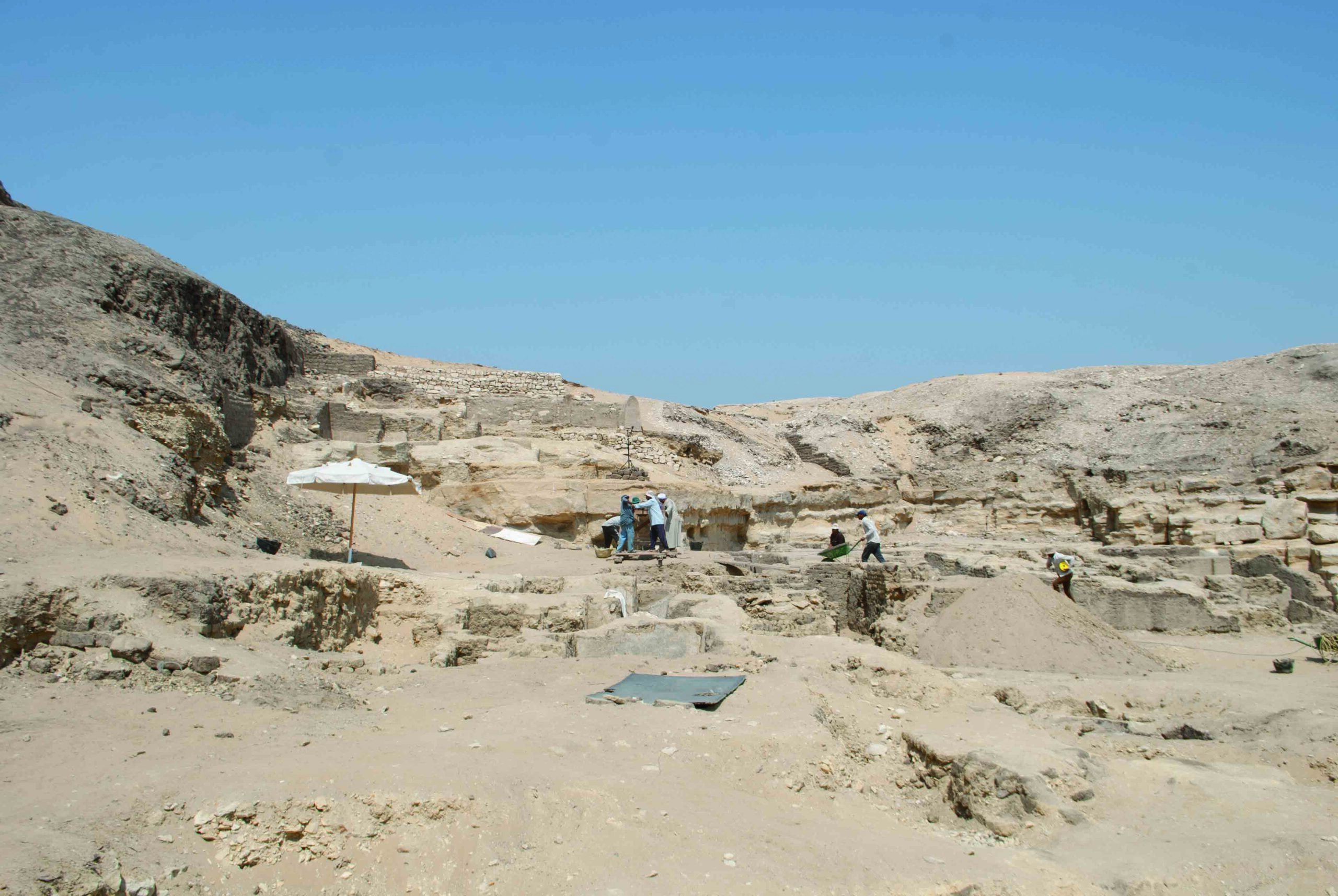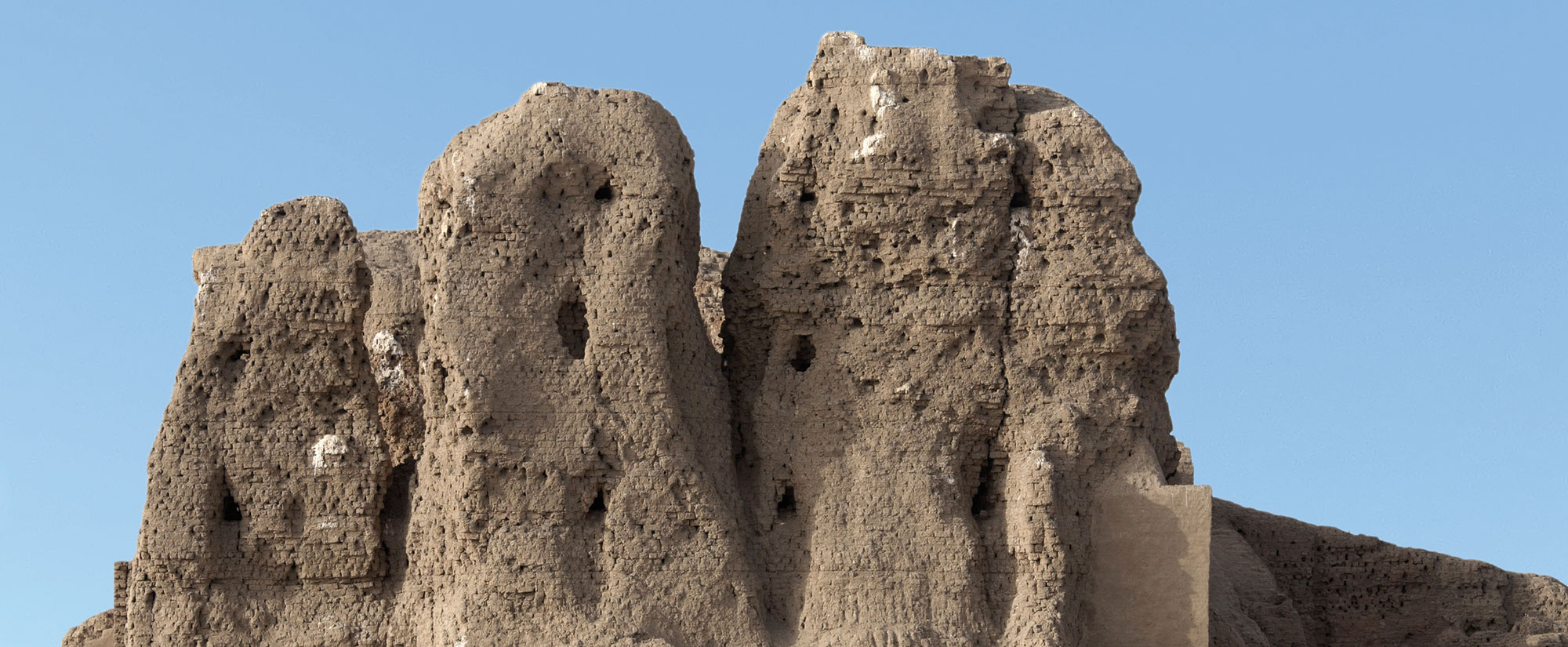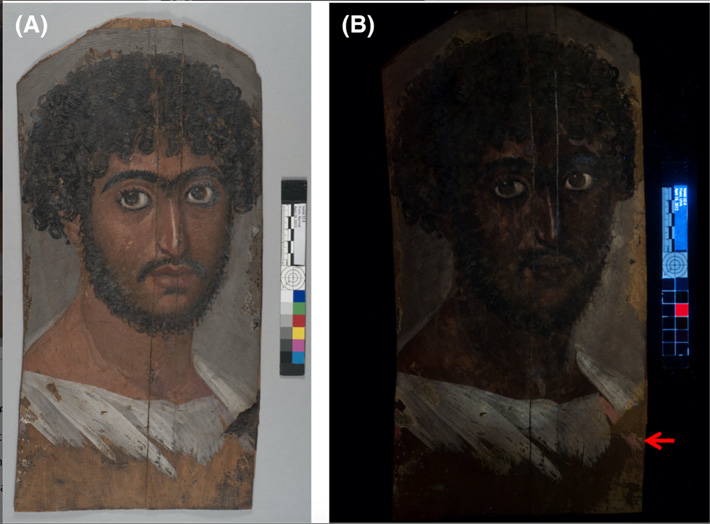
SALT LAKE CITY, UTAH—According to a statement released by the University of Utah, materials scientist Darryl Butt and his colleagues, and Glenn Gates of Baltimore’s Walters Art Museum, have analyzed a miniscule speck of purple paint taken from “Portrait of a Bearded Man,” a lifelike image painted on wood and wrapped into a mummy’s linens in the second century A.D., when Egypt was a Roman province. Such paintings, known as Faiyum portraits for the region of Egypt where they have been found, are thought to express the likeness and status of the mummified person. In this case, the “bearded man” was shown wearing purple marks called clavi on his toga, a symbol of the senatorial or equestrian rank, Gates explained. Under a microscope, the researchers found that the pigment contained large particles resembling crushed gems. Butt and his colleagues then used an ion beam to split the tiny sample into even smaller pieces for several tests. They determined that the purple color was created with a synthetic dye mixed with clay or silica to form a pigment, and then mixed with a beeswax binder to form paint. They are not sure how the dye was formed, however. Chemical analysis of the paints used in Faiyum portraits, Butt added, could allow researchers to link different portraits to each other, and thus possibly identify individual artists, and perhaps even family relationships, between the depicted individuals. Read the original scholarly article about this research in the International Journal of Ceramic Engineering & Science. To read about a pigment called Egyptian blue that was detected in another Roman-era mummy portrait, go to "Hidden Blues."


